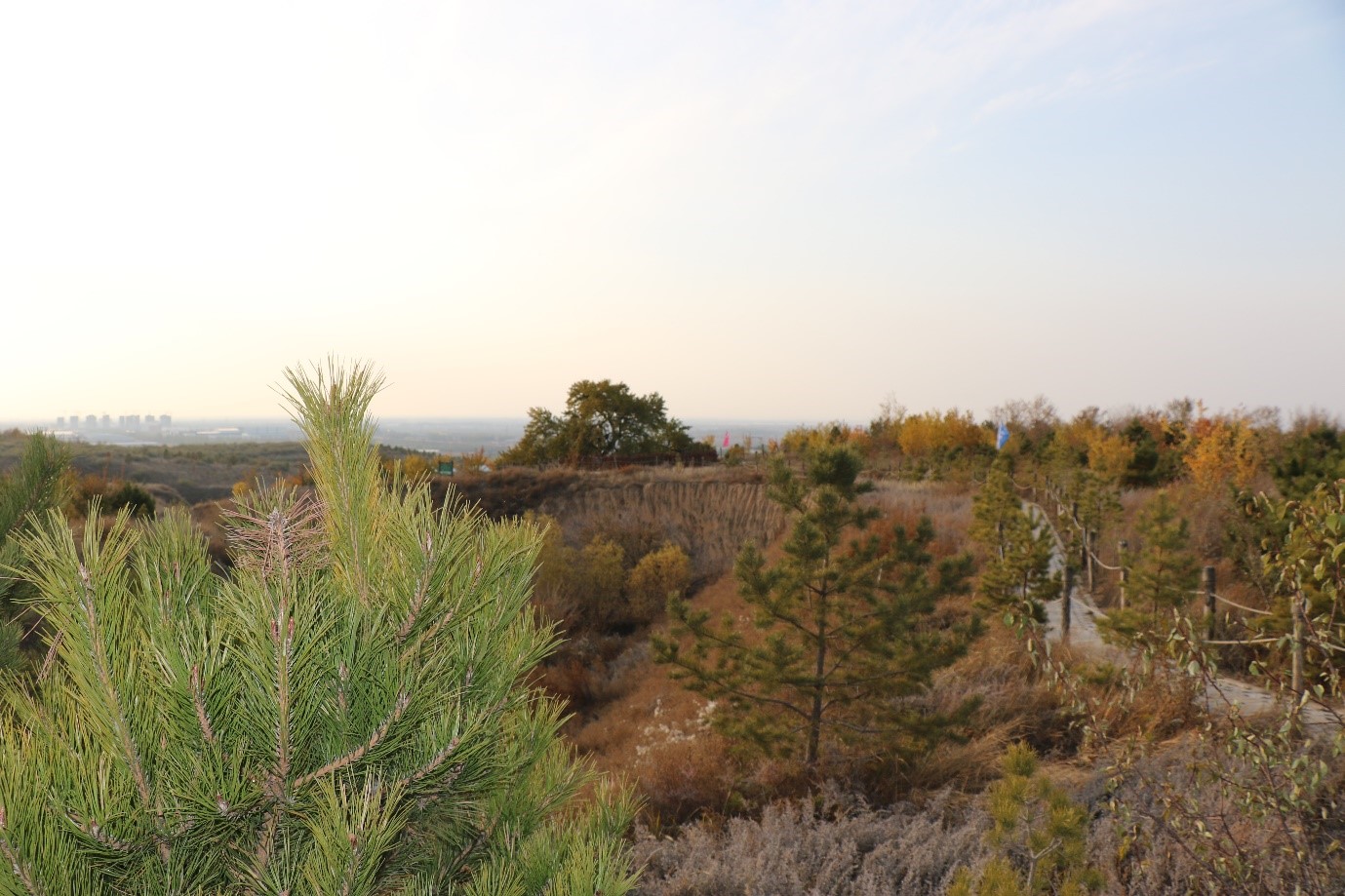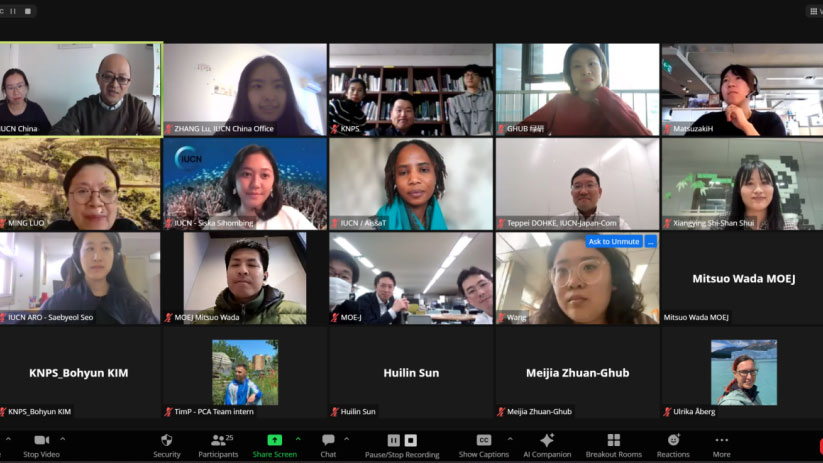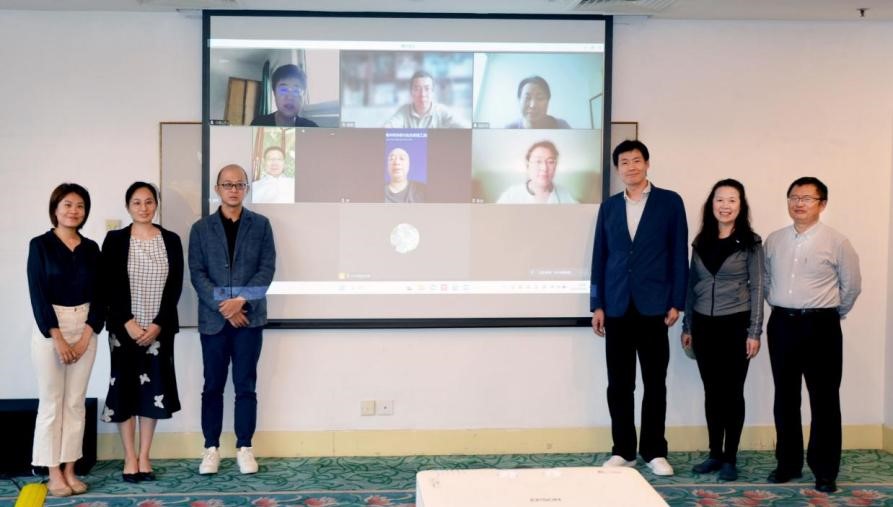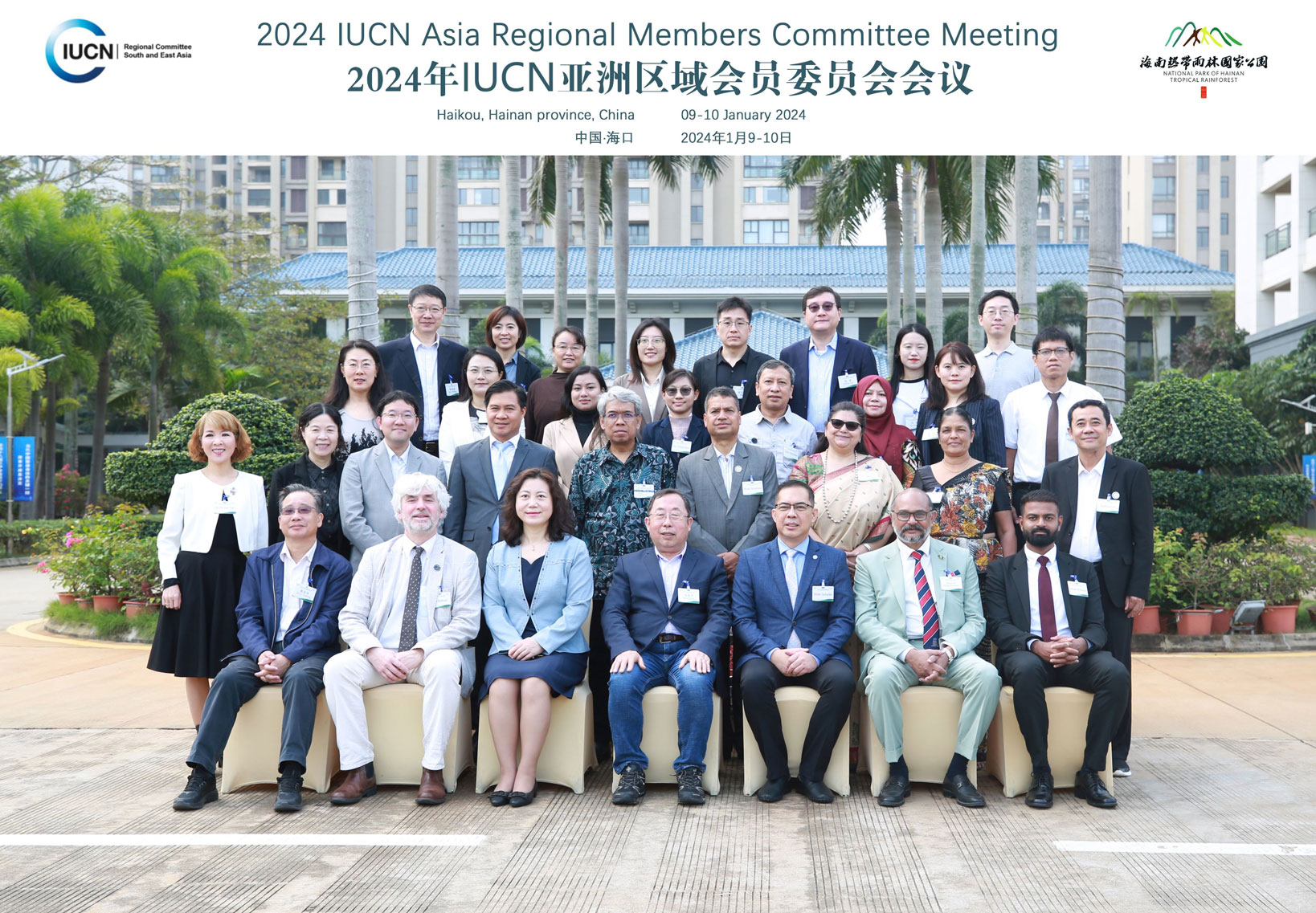Meet inspiring PANORAMA Solution Providers: Sargai Sha, Conservation Officer at The Nature Conservancy, China
Sargai Sha, Conservation Officer at The Nature Conservancy China is joined in this conversation by Cécile Fattebert of the IUCN Protected and Conserved Areas team.
The Nature Conservancy partnered with government agencies and philanthropic partners to restore degraded land in Inner Mongolia, leveraging a Restoration by Design approach to pinpoint Nature-based Solutions (NbS) for maximum impact, build resilience against climate change, and strengthen community livelihoods and wellbeing. This “Restoration by Design” approach was first leveraged in Helinge’er County in 2010, a typical agro-pasture ecotone in central Inner Mongolia.

What is your solution about and what makes it successful in a nutshell?
Our solution submitted to PANORAMA is called Nature Based Solutions in Inner Mongolia and our main approach is restoration by design, or RBD. It is an approach to solve land degradation problems.
Firstly, our RBD solution is a science guided systematic conservation approach, including the full cycle of restoration and adaptive management that allows multidisciplinary teams to pinpoint areas of high return for biodiversity, carbon sequestration and ecological restoration to achieve benefits for both nature and local communities, as well as help areas mitigate and adapt to climate change through sustainable land management. Secondly, local communities’ engagement and social economically viable management of restored lands are key to long-term success. We value local expertise and context. We consider the interests and risks of the local community at every level in order to build trust, help local communities build a climate resilient future in their homeland and protect nature. Lastly, but not least, RBD is a very down to earth approach that can be applied or replicated by any conservationist working in partnership with local communities, NGOs or counter groups or like society organizations.
And the fact that you applied for the Pathfinder award and were finalist of one of the categories, have you actually observed or collected some benefits so far?
Yes, we are honoured to be finalist at the Pathfinder Award in 2021. And then there are plenty of positive outcomes out of it. So first of all, it's a great recognition of our work and inspiration for our team and it also helps to raise our conservation impact among the entire conservation field, thereby benefiting our project promotion to the broader regions and helping stakeholders navigate difficult decisions about development and its impact on nature. We could say that it enhanced our social influence and policy influence.
Could you expand a bit on the policy influencing?
Obviously, because it's a great recognition and it improved our conservation impact among our field, and then, when we talk to our governmental partners, they can fully understand our methods and theories, our work is recognized by the related government agencies and they can take these solutions into consideration for policymaking.
Excellent. That's quite a big achievement.
Yes, it is indeed.
So, you are working in Horinger County in Inner Mongolia. If you look into the future in 10 or 20 years, what would be your vision for that area?
From the perspective of conservation and restoration, the ecosystem and corresponding services, like ecological functions of this region have been significantly improved. For example, we can see wildlife such as red foxes or roe deers in our field site, which is highly significant for biodiversity. It shows that local people's production or their daily life can truly live in harmony with nature. Horinger project site now serves as a comprehensive demonstration site and an incubation base for innovative practice of new measures and technologies for Inner Mongolia project. So, to conclude, after more than a decade of conservation efforts in Horinger, we have successfully demonstrated systematic ecological restoration and sustainable land management. And we're constantly learning from each of the stages and apply our new findings throughout the lifecycle of the project. Horinger is our initial and central demonstration site in inner Mongolia, which helped us to explore and incubate sustainable grassland, farmland, forest management projects, all of which are promoted in three different regions in Inner Mongolia so far.
Excellent! you are already in contact with stakeholders in three other areas in inner Mongolia. Did these stakeholders reach out to you and you had exchanges or did you go there to try to promote, what you've done or how these exchanges work in your region?
We often run communication sessions like conferences and skill trainings about Horinger demonstration site, which attracts interest from local governments and communities. At TNC, we use scientific tools to identify ecologically important areas (important ecological restoration and conservation areas in Inner Mongolia in this case), which guides us to choose our potential new project sites. If the place of interest expressed by governments and communities are within our identified ecological important area, we decide whether to start a new project, according to the interest and cooperation degree of the local government, the development needs of the local community, the existing conditions, the staff and funds we can provide.
But there are multiple reasons to promote our projects to a broader area.
You promote your region, then you get some feedback, some interest. Do you host people from other region to come to visit your area, for example?
Sure, we get visits from many places. Even from other countries. For example, an American students group visited our Horinger site and even planted some trees there several years ago. Because it's already a quite good demonstration site, it attracts people to visit. For these three different regions I just mentioned, we are already implementing sustainable grassland, farmland and forest management projects. And we are now actually aiming at promoting our project in more areas.
More areas in the country, or even beyond?
In Inner Mongolia, China, now. But, I would say we don't just stick into Inner Mongolia, as our method is suitable for most arid areas and semi-arid areas in the world. For instance, we are discussing collaboration interest with TNC Mongolia programme to promote this solution to Mongolia.
What messages, recommendations, needs would you like to share with the conservation and policy actors evolving in the global arena?
The climate land degradation and biodiversity crisis are the challenges of our lives. Global decision makers, all the conservationists and conservation actors need to work together to overcome these big challenges. Platforms that are supported by conservation organizations like IUCN and TNC, such as PANORAMA, can provide great opportunities for sharing experience, building network or developing talents, or enhance collaboration and policy influence, because nature protection programs are never accomplished overnight, and it requires scientific knowledge and long-term persistence to achieve results. So, we need to share resources, financial or technical knowledge and learn from each other. This can make a big difference.
Do you have any final word or a question for us?
In general, I think, this kind of down to earth, more specific or systematic kinds of replicable solutions are needed to tackle our environmental challenges. So, we appreciate PANORAMA website, to provide this opportunity, to provide this great platform for all conservationists or conservation actors, to learn from it.
That's great. We hope that you will also be able to spread this message with partners or people, you work with on the ground, in the different regions as well. We are always happy if we receive new solutions like yours!
Sure. Will do!



